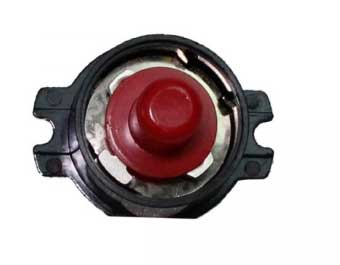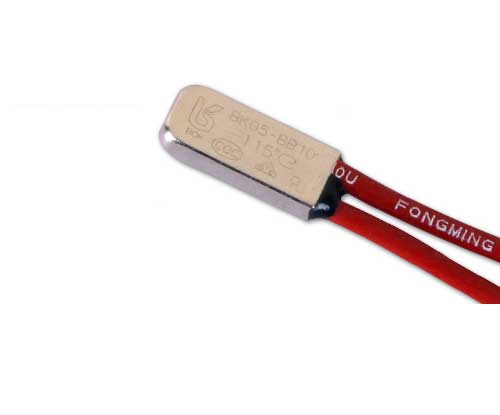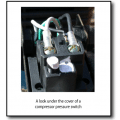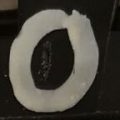Sometimes a compressor will not start. There is power at the plug, at the pressure switch, power is getting across the pressure switch to the motor, but then, that’s it. Nothing. It could be the compressor motor high heat thermal cut out is the issue. It’s also called a thermal cut off or thermal switch, among other names.
Table of Contents
- What is a compressor motor high heat thermal cut out?
- Motor thermal reset button won’t stay pushed in
- In-circuit thermal cut out melted
What is a compressor motor high heat thermal cut out?
Compressor motors generate heat while they are working. If there is a problem with the motor, or if the motor is experiencing a greater load than it is rated for, for example, the pump cylinder is binding somehow and the binding is adding load to the motor via the drive shaft, then the electric compressor motor will work harder and get hotter.
If the motor exceeds a built in safety – and that’s the high heat cut off – the electric motor can be damaged. If the heat gets too high, pr the motor runs too long which also increases motor heat, the motor can be destroyed.

That’s why most (I can’t say all since I haven’t seen every one) compressor electric motors have a reset button. It may look similar to the one above which is often found sticking out the end of a motor, or it might be installed behind the motor plate, and if so, that thermal cut out may look a little bit closer to this next one.

When the temperature of the compressor motor starts to get overly warm then that temperature will reach a threshold setting upon which time the thermal reset will, in the case of the first reset button shown above, pop out, or, in the case of the second shown below the first, actually melt the fuse.
In both cases power to the motor will be cut off, stopping the compressor motor from running any longer. The compressor motor will not longer run unless:
- the motor temperature cools to the point when the reset button will stay in when pushed
- the melted thermal cut out is replaced with a new one
Motor thermal reset button won’t stay pushed in
When the motor gets too hot the internal components of the switch shift or expand in response to the increasing motor temperature and this pops the button out cutting power to the compressor motor.
If an attempt is made to push the reset button in too quickly, the button will not stay pushed in, and power will not flow continuously to the motor. Wait until the motor gets cold before pushing in the reset.
If the motor has become cold and the reset button cannot be pushed in or won’t stay pushed in, even if the motor has failed pushing in the reset button on a cold motor should allow the button to stay depressed. It is possible that the motor reset button itself has failed and may need to be replaced.
This happens, but it is a rare occurrence.
In-circuit thermal cut out melted
If there is no visible reset button on the motor, with the power to the compressor off, remove the motor junction box / wiring cover. Have a look for a device similar to the lower image shown above.
Examine that device and see if it has become misshapen or burnt in color. If it has, it will need to be replaced.
- But why did the compressor motor thermal cut out trip in the first place?
- running the compressor for longer than its duty cycle
- low oil in the sump if it is a lubed air compressor
- an issue with the electric compressor motor itself causing overheating
- a mechanical issue on the compressor creating greater load than the motor is rated for
If the compressor motor thermal cut out on a compressor is failing frequently, it is an indication that there is an issue with how the compressor is being used or something on the compressor is failing causing load.
Time to investigate to determine what that issue is.




